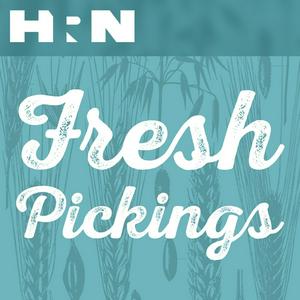Episode 6: Flaxseed Meal
Flax is an amazingly versatile food and fiber crop. In fact, it’s one of the oldest fiber crops in the world, known to have been cultivated in ancient Egypt and China. If it seems like flax is good for everything, that’s because it is. Its Latin name is usitatissimum, which means “most useful.”
On this episode, Kat talks to Harry Rosenblum, host of Feast Yr Ears here on Heritage Radio Network, about all things flaxseed. Did you know: Flaxseed sprouts are edible, with a slightly spicy flavor. In northern India, flaxseed, called tisi or alsi, is traditionally roasted, powdered, and eaten with boiled rice, a little water, and a little salt, and used in Savji curries. The seed of the plant is edible, but grinding it into meal unlocks its health benefits and makes it more readily digested. Flaxseed meal can be added to bread, pancakes, muffins, bars, cookies, and all sorts of other recipes to provide a nice nutty flavor and a nutritional punch.
To learn more about how we can incorporate flaxseed into recipes, Kat is joined by her friend and VLGL blogger, Elizabeth Taylor. Elizbeth's VLGL diet is a whole-foods, plant-based way of cooking and eating that emphasizes non-starchy vegetables, whole fruits, nuts, legumes, seeds, and certain whole grains.

